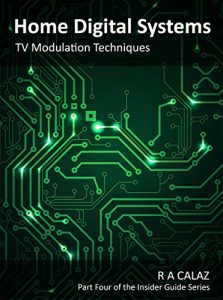This series of publications introduces the reader to the application of digital systems in the home. It is suitable for those with no prior knowledge of the subject, whilst at the same time providing a source of reference for experienced installers who wish to know more about the subject.
This book (book 4) describes how a radio wave is generated and how they propagate through the air with either horizontal or vertical polarisation, interfering with each other as they travel.
The concepts of frequency and wavelength are then introduced and the uses of different frequency bands are described, together with how a filter can be used to separate out a particular service.
The final section describes how a radio wave can be modified to carry information or data, by changing its characteristics. The various types of “modulation” used by broadcasters are described and their data capacities are listed.
Parts one to twelve cover radio, TV and satellite reception and distribution; parts thirteen to sixteen cover data systems and part seventeen is a reference of abbreviations and a glossary of terms.
This book (book 4) describes how a radio wave is generated and how they propagate through the air with either horizontal or vertical polarisation, interfering with each other as they travel.
The concepts of frequency and wavelength are then introduced and the uses of different frequency bands are described, together with how a filter can be used to separate out a particular service.
The final section describes how a radio wave can be modified to carry information or data, by changing its characteristics. The various types of “modulation” used by broadcasters are described and their data capacities are listed.
Parts one to twelve cover radio, TV and satellite reception and distribution; parts thirteen to sixteen cover data systems and part seventeen is a reference of abbreviations and a glossary of terms.






